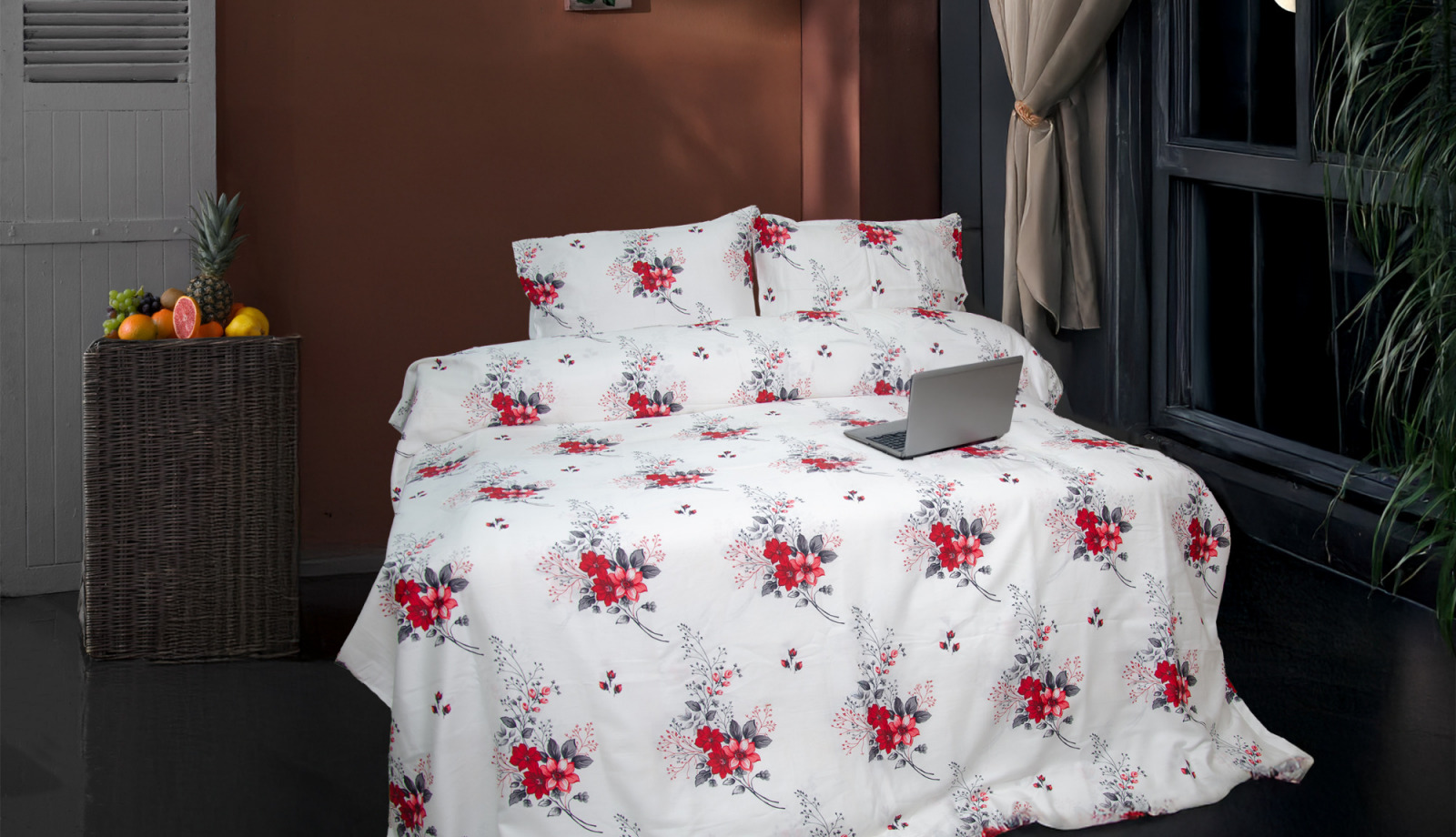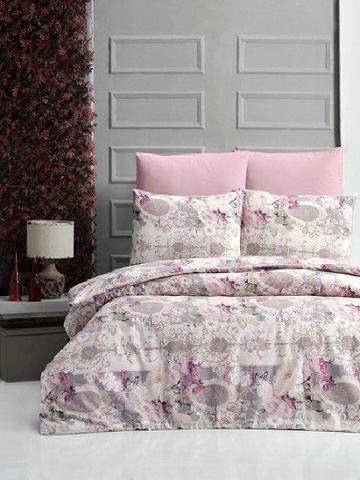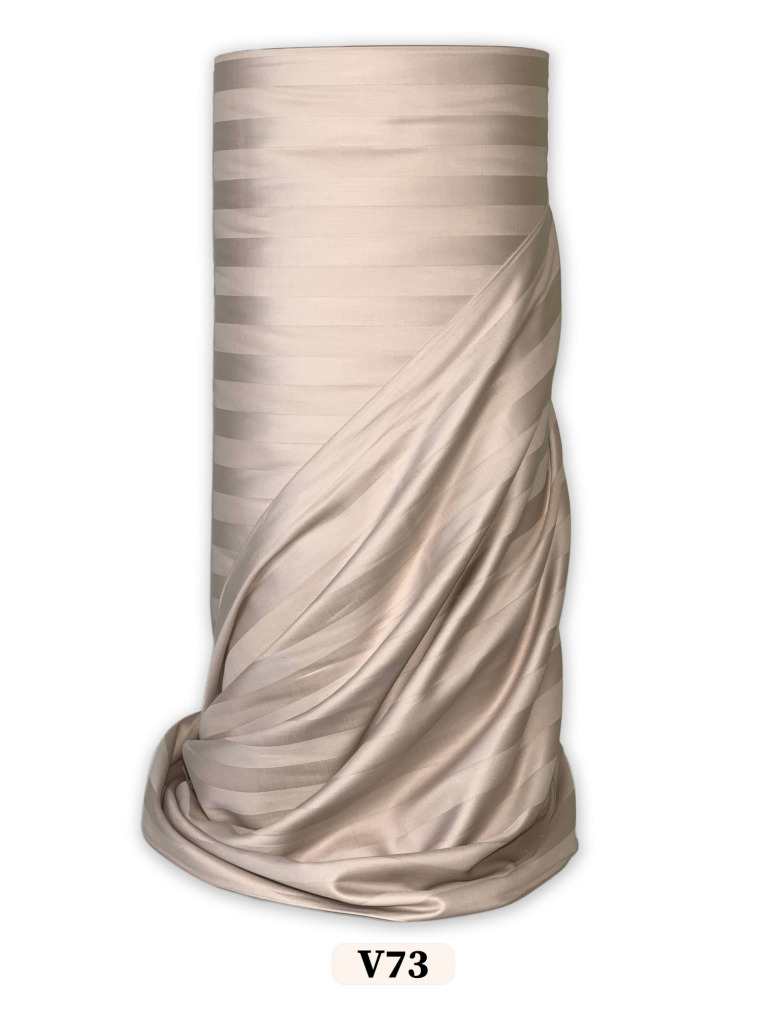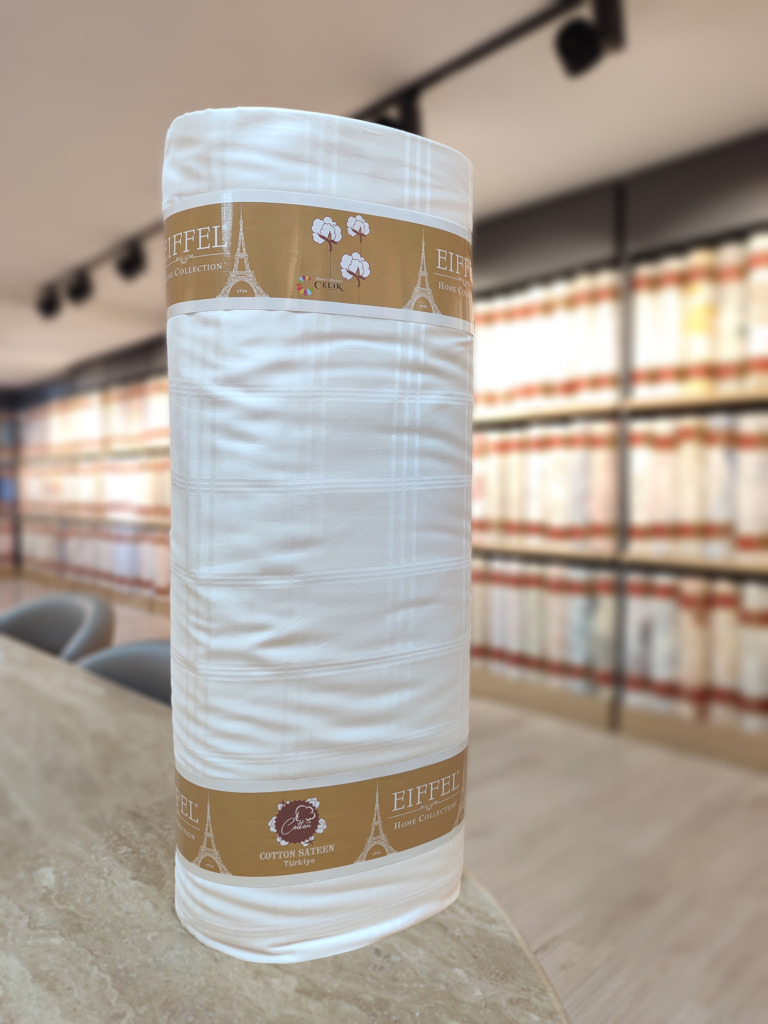Satin is one of the most elegant and luxurious fabrics in the textile world. Renowned for its smooth, glossy surface and soft, flowing drape, satin is a favorite in both the fashion and home textile industries. The fabric’s unique weave structure allows it to reflect light beautifully, giving it a lustrous appearance that adds sophistication to any setting. Whether crafted from silk, polyester, or a blend of fibers, satin remains a timeless choice known for its comfort, sheen, and richness.
Applications of Satin in Fashion and Home Decor
Satin’s appeal in fashion is unmatched. Its fluidity and shine make it ideal for high-end evening wear and daily clothing alike. Common garments made from satin include dresses, skirs, shirts and blouses, until shoes and footwear.
Still, Satin is not limited to wardrobes—it’s also a popular choice in interior design. Its rich texture enhances the elegance of home spaces:
- Curtains and Drapes: Satin curtains can create a dramatic, luxurious look, especially in bedrooms or formal living rooms.
- Bed Sheets and Pillowcases: Satin bedding offers a smooth, cool surface that’s gentle on the skin and hair, often used for both comfort and beauty benefits.
- Upholstery and Sofas: Satin is sometimes used on accent furniture or cushions to introduce a sophisticated shine to the decor.
- Tablecloths and Decorative Throws: These add a glossy, festive feel to dining settings and lounges.
Technical Details of Satin
Here are the technical detains of Eiffel satin fabric offered by Celik Tekstil:
- Composition: 100% Cotton, or 50% Tencel / 50% Cotton (for Tencel Satin) or 50% Polyester / 50% Cotton for Poly-cotton Satin
- Quality: 85 Wire (220 TC) 40/1
- Weight: 125 GR/M² ± 5%
- Width: 240 CM
- Roll size: 30 M
Composition and Raw Materials
Satin is not a fiber but a type of weave. The satin weave is characterized by four or more warp yarns floating over a weft yarn or vice versa. This structure gives satin its signature sheen. Satin can be made from various fibers:
- Silk Satin: The most luxurious and expensive type, made from natural silk fibers.
- Polyester Satin: Common and more affordable, made from synthetic fibers.
- Cotton Satin (Sateen): A matte version, made from cotton using a satin weave.
How It’s Produced
Satin is produced by weaving fibers in a way that exposes more of the surface threads, creating a glossy finish. Advanced looms are used to achieve this pattern, especially for jacquard or printed varieties. The choice of fiber affects the final cost, weight, and luster.
Is Satin Hypoallergenic?
Silk satin is naturally hypoallergenic and suitable for sensitive skin. Polyester satin, however, may cause irritation in rare cases due to synthetic components.
Does Satin Make You Sweat?
Silk and cotton satin are breathable and help regulate temperature, but polyester satin is less breathable and can cause sweating in warm weather.
Is Satin See-Through?
It depends on thickness and color. Lightweight satin, especially in lighter shades, may be slightly see-through. Heavier or lined satin offers more opacity.
Types of Satin
- Plain Satin: Smooth, glossy on one side, matte on the other; most common and versatile.
- Printed Satin: Features digitally or screen-printed designs for fashion or decor use.
- Striped Satin: Similar to plain satin, with 1CM or 2CM or 3CM stripes. The stripes are not printed, but they are made with altering satin weave during the production of satin fabric.
- Jacquard Satin: Woven with complex patterns into the fabric itself, often used for upholstery and formal garments. Every company has its unique jacquard pattern to show off and to be used as their signature on the finished products.
- Silk Satin: Made from natural silk, known for its supreme softness and luxury.
- Cotton Satin (Sateen): Has a subtler shine and is softer, used mainly in bed linens and casual clothing.
- Tencel Satin: Eco-friendly satin fabric production. More details will follow.
Satin Prices in Turkey
In Turkey, a major hub for textile production, satin is widely manufactured and exported. Prices vary depending on the type and quality. Turkey offers competitive wholesale pricing, especially in cities like Istanbul, Bursa, and Gaziantep, making it an attractive market for local and international buyers.
Celik Tekstil as one of the leading producers and exporters of satin fabric, is always ready to offer satin fabric with competitive wholesale price in Turkey and internationally.
Care Instructions for Satin
Satin requires careful handling to preserve its beauty:
Washing
- Hand wash or delicate machine cycle in cold water (30°C max) is recommended.
- Use mild detergents, avoiding bleach or fabric softeners.
- Avoid wringing the fabric to prevent damaging the fibers.
Ironing
- Iron on the lowest heat setting (ideally “silk” or “synthetic”) from the reverse side.
- Place a pressing cloth between the iron and fabric to prevent marks.
Stain Removal
- Treat stains immediately with cold water and a gentle detergent.
- For oil-based stains, sprinkle cornstarch or talcum powder to absorb before rinsing.
- Avoid rubbing or scrubbing which may damage the sheen or weave.
What is Tencel Satin? A Sustainable Alternative
Tencel Satin is a modern, eco-friendly version of traditional satin that combines the smoothness of satin weave with the sustainability and comfort of Tencel fibers. Tencel is a brand name for a fiber called lyocell, which is derived from wood pulp, primarily eucalyptus trees, through an environmentally responsible closed-loop process. Tencel is known for being breathable, moisture-wicking, antibacterial, and biodegradable—making Tencel satin a premium choice for conscious consumers.
Tencel satin blends the best of both worlds: it has the soft, silky drape and glossy appearance of classic satin, with the cool, breathable, and skin-friendly nature of Tencel. This type of fabric is offered by Celik Tekstil in two forms:
- Plain Tencel satin has a smooth, consistent surface with a glossy face and a matte back, similar to traditional plain satin.
- Checkered Tencel satin features a subtle checkered or square pattern woven into the fabric, somewhat resembling striped or jacquard satin, but with a more minimalist and modern aesthetic. These checkered patterns are not printed—they’re created by altering the satin weave to reflect light differently in each section. This type of satin combines elegance with a slightly more structured or tailored feel, making it stand out from the typical smooth satin.
Why Choose Tencel Satin?
- Sustainable: Made from renewable plant sources in a low-impact process.
- Breathable & Cool: Regulates temperature better than polyester or silk satin.
- Hypoallergenic: Ideal for sensitive skin and allergy-prone users.
- Strong Yet Soft: Tencel fibers are both durable and silky to the touch.
- Low Environmental Impact: Fully biodegradable and compostable under the right conditions.




